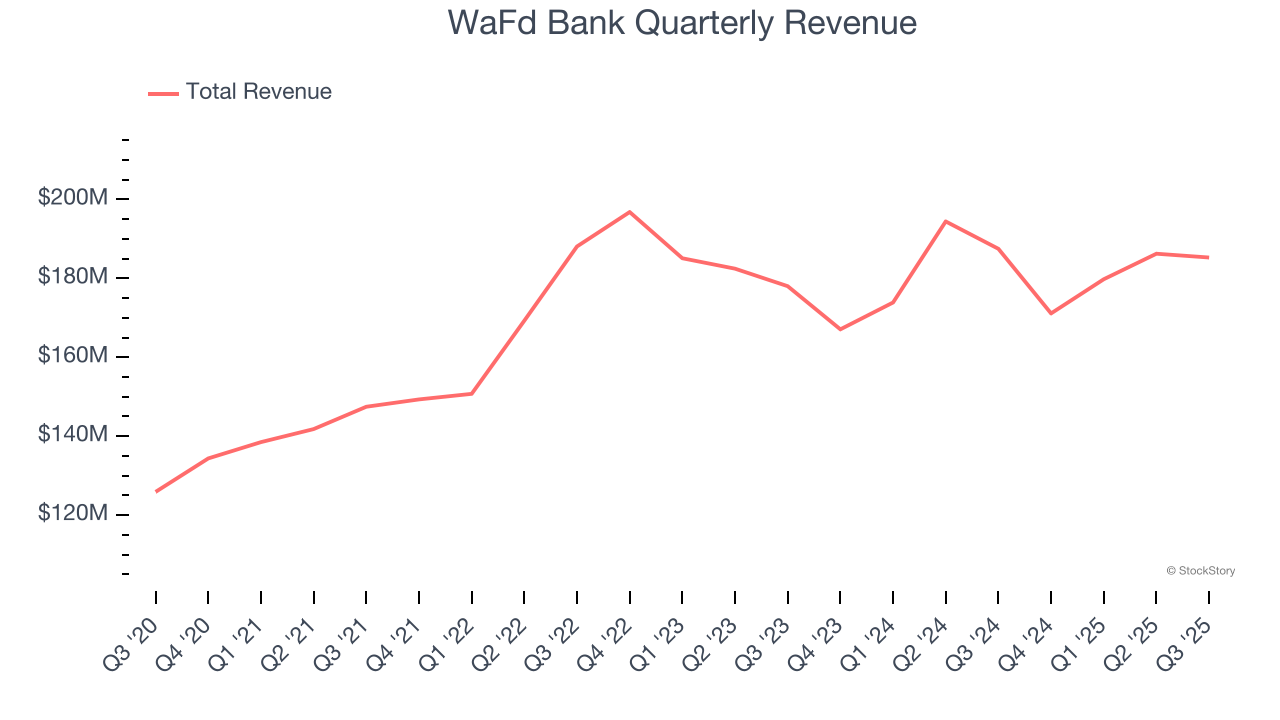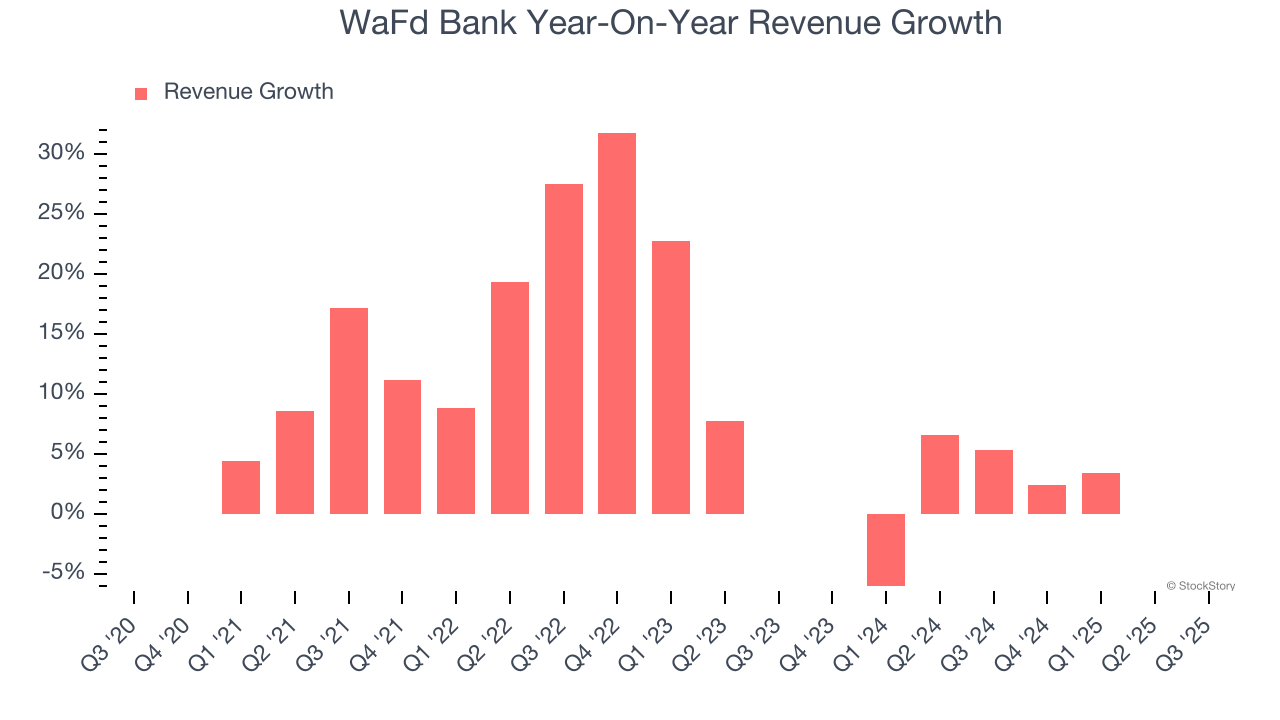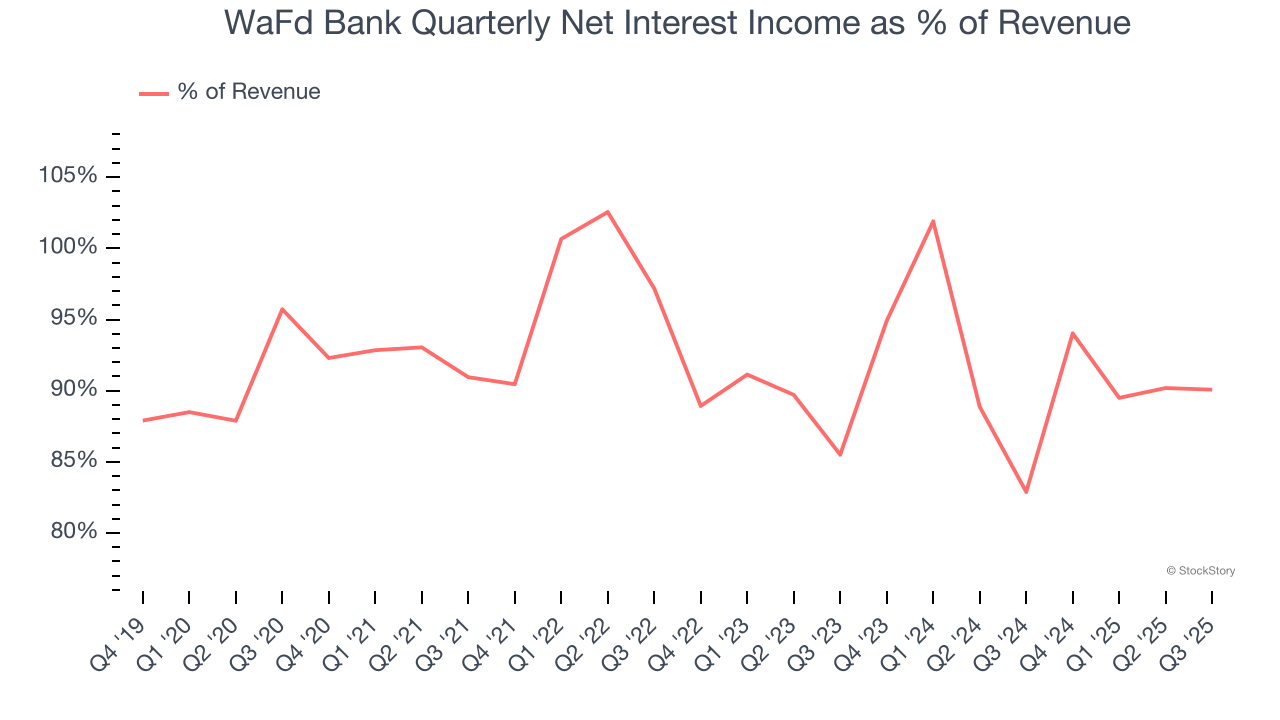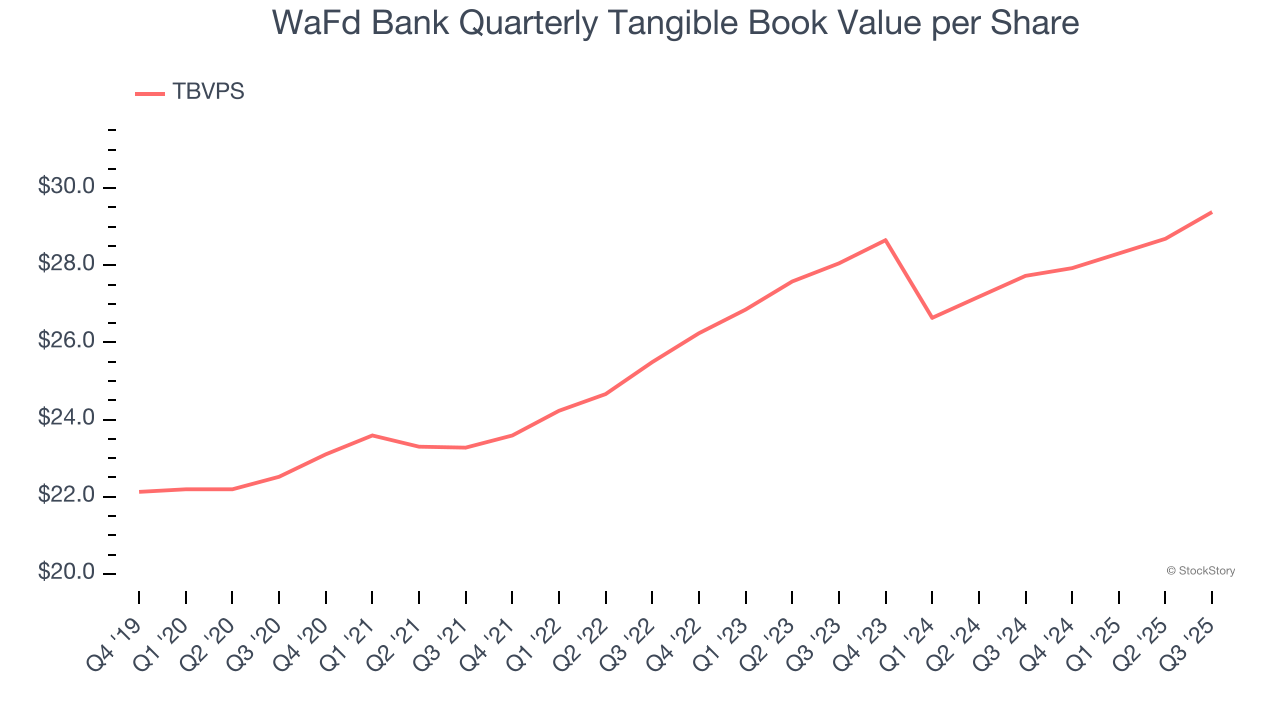
Regional banking company WaFd (NASDAQ: WAFD) missed Wall Street’s revenue expectations in Q3 CY2025, with sales falling 1.2% year on year to $185.3 million. Its GAAP profit of $0.73 per share was 4.6% below analysts’ consensus estimates.
Is now the time to buy WaFd Bank? Find out by accessing our full research report, it’s free for active Edge members.
WaFd Bank (WAFD) Q3 CY2025 Highlights:
- Net Interest Income: $166.9 million vs analyst estimates of $172.2 million (7.4% year-on-year growth, 3.1% miss)
- Net Interest Margin: 2.7% vs analyst estimates of 2.7% (2.5 basis point miss)
- Revenue: $185.3 million vs analyst estimates of $191 million (1.2% year-on-year decline, 3% miss)
- Efficiency Ratio: 56.8% vs analyst estimates of 55.1% (177 basis point miss)
- EPS (GAAP): $0.73 vs analyst expectations of $0.77 (4.6% miss)
- Tangible Book Value per Share: $29.38 vs analyst estimates of $29.17 (6% year-on-year growth, 0.7% beat)
- Market Capitalization: $2.28 billion
Company Overview
Founded in 1917 and rebranded from Washington Federal in 2023, WaFd (NASDAQ: WAFD) is a bank holding company that provides lending, deposit services, and insurance through its Washington Federal Bank subsidiary across eight western states.
Sales Growth
Net interest income and and fee-based revenue are the two pillars supporting bank earnings. The former captures profit from the gap between lending rates and deposit costs, while the latter encompasses charges for banking services, credit products, wealth management, and trading activities. Over the last five years, WaFd Bank grew its revenue at a decent 6.7% compounded annual growth rate. Its growth was slightly above the average banking company and shows its offerings resonate with customers.

We at StockStory place the most emphasis on long-term growth, but within financials, a half-decade historical view may miss recent interest rate changes, market returns, and industry trends. WaFd Bank’s recent performance marks a sharp pivot from its five-year trend as its revenue has shown annualized declines of 1.4% over the last two years.  Note: Quarters not shown were determined to be outliers, impacted by outsized investment gains/losses that are not indicative of the recurring fundamentals of the business.
Note: Quarters not shown were determined to be outliers, impacted by outsized investment gains/losses that are not indicative of the recurring fundamentals of the business.
This quarter, WaFd Bank missed Wall Street’s estimates and reported a rather uninspiring 1.2% year-on-year revenue decline, generating $185.3 million of revenue.
Net interest income made up 92.4% of the company’s total revenue during the last five years, meaning WaFd Bank lives and dies by its lending activities because non-interest income barely moves the needle.

Markets consistently prioritize net interest income growth over fee-based revenue, recognizing its superior quality and recurring nature compared to the more unpredictable non-interest income streams.
Today’s young investors won’t have read the timeless lessons in Gorilla Game: Picking Winners In High Technology because it was written more than 20 years ago when Microsoft and Apple were first establishing their supremacy. But if we apply the same principles, then enterprise software stocks leveraging their own generative AI capabilities may well be the Gorillas of the future. So, in that spirit, we are excited to present our Special Free Report on a profitable, fast-growing enterprise software stock that is already riding the automation wave and looking to catch the generative AI next.
Tangible Book Value Per Share (TBVPS)
The balance sheet drives banking profitability since earnings flow from the spread between borrowing and lending rates. As such, valuations for these companies concentrate on capital strength and sustainable equity accumulation potential.
This explains why tangible book value per share (TBVPS) stands as the premier banking metric. TBVPS strips away questionable intangible assets, revealing concrete per-share net worth that investors can trust. Other (and more commonly known) per-share metrics like EPS can sometimes be murky due to M&A or accounting rules allowing for loan losses to be spread out.
WaFd Bank’s TBVPS grew at a decent 5.5% annual clip over the last five years. However, TBVPS growth has recently decelerated to 2.3% annual growth over the last two years (from $28.05 to $29.38 per share).

Over the next 12 months, Consensus estimates call for WaFd Bank’s TBVPS to grow by 5.9% to $31.12, mediocre growth rate.
Key Takeaways from WaFd Bank’s Q3 Results
It was good to see WaFd Bank narrowly top analysts’ tangible book value per share expectations this quarter. On the other hand, its revenue missed and its net interest income fell short of Wall Street’s estimates. Overall, this was a weaker quarter. The stock traded down 1.3% to $27.50 immediately following the results.
WaFd Bank underperformed this quarter, but does that create an opportunity to invest right now? If you’re making that decision, you should consider the bigger picture of valuation, business qualities, as well as the latest earnings. We cover that in our actionable full research report which you can read here, it’s free for active Edge members.





